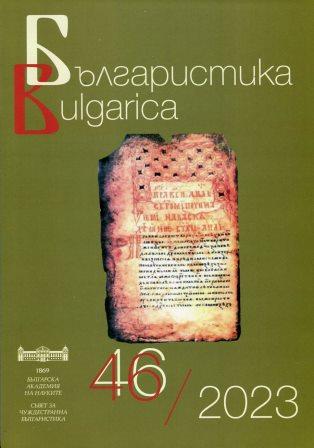
We kindly inform you that, as long as the subject affiliation of our 300.000+ articles is in progress, you might get unsufficient or no results on your third level or second level search. In this case, please broaden your search criteria.


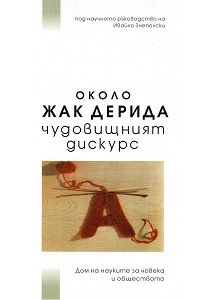


The text is focused on the problems of womanhood and motherhood in the literature, written by women in the former socialist states. It aims to explore the implications of the Soviet ideology and propaganda in the contemporary perceptions of gender and family roles and to answer the question about the importance of the remaining conservative traditional family values in the region. By exploring novels by female authors, the study tries to show the methods and tendencies in which women try to apply change through art. The main objects of analyses are the novels “Mrs. G.” by Emilia Dvoryanova and “Primeval and Other Times” by Olga Tokarczuk.
More...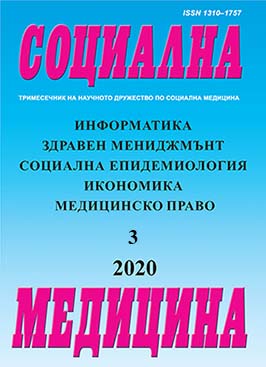
The aim of the study is to investigate the fight against infant mortality in the second half of 19-th century till the 1930-s, by examining it in four selected countries, significantly different in rates of the indicators and development of the healthcare system – France, Great Britain, Russia, USA. Methodology A historical documentary method is applied for achieving the aim. There are some common features of the fight against infant mortality for the defined period in the four countries – recognition of infant mortality as a socially important problem, expansion and enrichment of the statistics, and on their basis development and implementation of measures for its reduction. Risks related to the mother, low socio-economic status, bad hygiene, especially in urban environments are the main reasons for the high infant mortality rates. Physicians and social reformers are the main actors in the development of organizations fighting infant mortality. Charity has a leading role in improving child health in the lack of social policy. During the first half of the 20th century legislation was passed in many countries on the protection of motherhood and childhood, aimed at all regardless of their socio-economic status. Specific structures and organizations for prevention mothers and children are established, good practices such as health-visitors are applied, medical and social approaches are integrated. The fight against infant mortality entered a new stage after the Second World War, grounded on the concept of the development of maternal and child healthcare, when the major scientific inventions in medicine contribute to its successful realization.
More...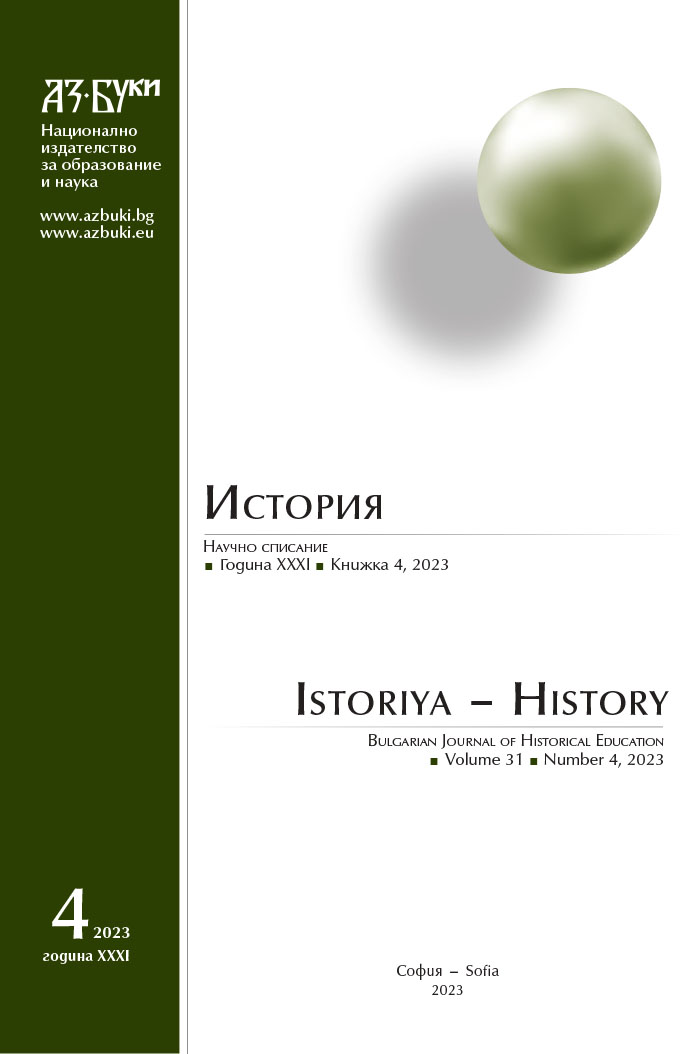
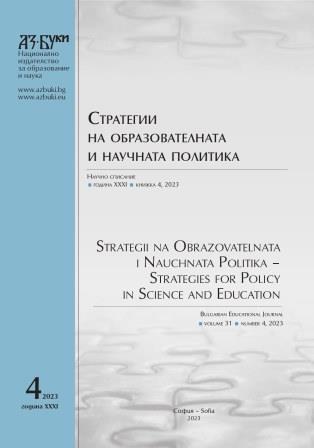
The COVID-19 virus outbreak has affected all aspects of human life. The challenges of education during the pandemic could have an impact on coping with stress. The aim of the current study was to explore the effects of people’s resilience to stress on burnout symptoms. We used The Maslach Burnout Inventory (Maslach, 1982), while the capacity to cope with stress and recover was measured with the Connor-Davidson Resilience Scale (2003). There were 375 participants, 235 women and 140 men, between the ages of 18 and 48 years old (M = 21.43; SD = 3.93), learning in higher education institutions. We performed several regression analyses using a stepwise method. Adaptability (β = -.38, p < .01), external control (β = .23,p < .01), seeking social support (β = -.26, p < .01), and decisiveness (β = .17, p < .01) were found to be significant predictors of emotional exhaustion (R2adj = .175). When it comes to personal accomplishments significant predictors were purposefulness(β = .29, p < .01), decisiveness (β = .19, p < .01), and adaptability (β = .13, p < .01) (R2adj = .304). Social support (β = -.36, p = .00), external control (β = .24, p < .01) and purposefulness (β = -.18, p < .01) were significant predictors of depersonalization (R2adj = .186). The findings from the present study show that high levels of resilience to stress have a protective effect on the manifestations of burnout symptoms. These results have implications for proposing theoretical foundations for burnout prevention strategies in an online learning context. Also, enrich intervention techniques connected with achieving higher adaptability.
More...
The article examines the problems of an integrated approach to the development of academic mobility in the system of training a special education teacher. The results of an experimental study are presented, which made it possible to find out the real state of readiness of future special teachers for academic mobility; to identify problems that have an inhibitory effect on this process. In general, they indicate the dominance of the student’s object position in the system of his professional development, so academic mobility is not perceived by them as an effective means of developing professional competence. This is confirmed by the results of a survey on the range of indicators of existing experience in academic mobility, the attitude to it as a factor of the quality of professional development and the presence of barriers that complicate it. The prospects of providing a systematic approach to the development of academic mobility of students are determined, within which it is necessary: on the one hand – to design the development of the student’s subject position in the system of his professional development on the basis of an individual educational trajectory, on the other – to develop gradually the possibilities of academic mobility based on increasing the active position of the student himself.
More...
The article examines the ways in which sustainable tourism is implemented in education. The need for this incorporation is identified and essential components through which it can be realized in tourism education are outlined. The object of the study is higher education in tourism, and its subject is the implementation of knowledge, skills and competences in students for the sustainable development of the sector. The main thesis of the author is that implementing the goals of sustainable development in tourism education and building a new way of thinking has an impact on the future abilities of professionals in the sector to achieve its long-term viability. On the basis of exploration of existing literature, as well as on the basis of own scientific and teaching experience, a conceptual model for education towards sustainable tourism development has been built and proposed. As an additional result of the research, good international practices and opportunities for education in the direction of sustainable tourism are presented.
More...
The article reflects the results of research among practical education specialists who teach the students of the “Social Pedagogy” specialty of the University of Sofia and the teachers who are responsible for the organization of the practical training. The research was carried out through a focus group and a survey and aims to establish the good practices and challenges in organizing and conducting the practical training of the students during the COVID restrictions. The analysis of the results allows us to outline guidelines for improving the quality of the training in the conditions of unforeseen changes and crisis situations to satisfy the need for qualified and motivated specialists in the field of social pedagogy.
More...
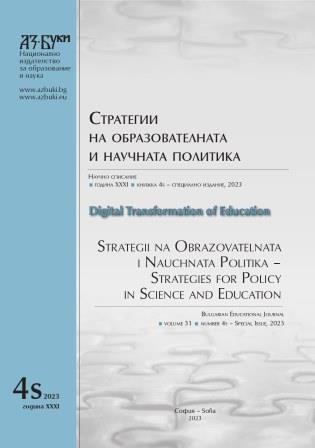
After an overview of the scientific literature, scientifically proven inner university mechanisms, aiming to increase the quality of distance learning in accordance with our country’s regulations have been proposed, with the emphasis of this report being the model for evaluating e-courses for distance learning by experts (according to specially developed rules).One of the model’s key benefits is that it actually leads to increased e-course quality when distance learning is concerned. With this system every teacher, whose course is subject to evaluation, is provided with the support that is needed and has a personal contribution in helping distance learning meet country requirements. A disadvantage of the model is the need for precise verification and approval of the course by experts, which requires time and effort. Ways to resolve this problem were investigated.
More...
The digital transformation of the industrial domains and the everyday human life has led to new ways of entertainment, safer working environments, better transport technologies, global connectivity and many other social and economic benefits, but it has also caused some indirect and unexpected consequences for the labour market – the emergence of numerous never-before-seen professions, which are closely related to the information and communication technologies. This has led to a sudden demand for large number of workers with knowledge and experience in the area of the digital technologies – something for which the educational systems of many countries were not adequately prepared and were caught by surprise. In order to meet the challenges of this digital revolution, numerous plans, programmes and mechanisms were created for the rapid and large-scale digitization of all levels of the educational system. Unfortunately, one of the most vital requirements for the introduction of the innovative teaching methods in the primary and secondary schools was significantly underestimated – the lack of sufficient time and capabilities to train and prepare the teachers. It is exactly here, where the role of the universities stands out, as they can respond appropriately to this need and they can prepare the teachers for the new digital challenges much faster and easier. The universities can also act as mediators between the business sector and the primary or secondary education institutions and can help them easily acquire financial or material support for the introduction of STEM classes in the educational processes. In this publication, we briefly discuss the STEM educational methods, their main goals and their primary characteristics. The article then presents a methodology for the rapid large-scale integration of these learning methods in the primary and secondary schools with the help and with the involvement of the higher education institutions. The last part of this publication presents in details the pilot initiative of the University of Ruse „Angel Kanchev“ for the introduction of classes in robotics and block-based programming in the primary and secondary schools in the Municipality of Ruse.
More...
The development of educational technologies in the 21st century allowed saturation with technological resources that dynamizes and digitizes the learning process. This new trend was logically supported with appropriate hardware and software. In the conditions of the Covid-19 pandemic, it was digital communication channels and virtual learning environments that ensured the continuity of the national education system. In higher education, the decades-old academic distance learning centres have provided the learning process for full-time and part-time students and proven their effectiveness. In parallel with the financial provision in school education for the construction of STEM classrooms, a professional standard for an environment, nurturing development was achieved. Both teachers and students in science, technology, engineering, and mathematics became the main beneficiaries. In contrast, in the system of higher education, delays and lagging are found, as often graduates coming from STEM classrooms end up in university classrooms which are decades behind in technological advancement. This paper therefore advocates the introduction of the tentatively named BEST standard, based on Business, Entrepreneurship, Science and Technology, in higher education as a logical build-up to the good STEM outcomes established in school settings.
More...
Young people are the future of society and agents for social change. That is why it is so crucial to provide education that not only equips them with knowledge and skills but also changes their attitudes and behaviour towards sustainable development.
More...
As social networks have evolved beyond their original purpose, and have proven to be a successful platform even for business and politics, it was only natural for the educational process to find its place in this virtual realm. As early as 2019, Facebook introduced the Social Learning mode, which provided excellent opportunities for publishing and structuring educational content within closed groups, taking the utilization of this social network to a new level in the learning process. It can hardly be disputed that social networks have the potential to offer rich access to a variety of educational resources, but recently, there has been a persistent migration of students from the digital generation to platforms such as Instagram, TikTok, Pinterest, where digital content in the form of small portions of visual and video information circulates. This trend leads to the need for a fresh interpretation of the concept of micro-learning and micro-content in the context of social networks, as well as the need to explore learners' attitudes towards such type of learning.
More...
Within the teacher's activity, school innovations can be summarized as innovations in the complete realization of the formal and non-formal educational process by introducing new or transforming traditionally imposed approaches, methods, means, technologies, and content. The establishment of innovations in modern education is identified with the digitalization process from which several misunderstandings arise. Still other problems related to the introduction of school innovations are still relevant and cause teachers' resistance to innovative school activities. Therefore, the mission of the university is to prepare teachers for this challenge. This study presents a part of a large research, commissioned by the Ministry of Education and Sciences, covering 3089 newly appointed teachers (with up to 3 years of educational experience). The study aggregates data from 8 questions, that are a part of questionnaire containing 38 questions. The results provide information both on the deficits in university preparation in aspect to introducing of school innovations, and on the specific attitudes of teachers from different stages and degrees of school education for conducting innovative educational activities, including ICT.
More...
The COVID-19 pandemic has led to a complete reorganization of the educational process and its transformation into a digital form in all countries affected by the crisis. But all too often, school institutions fail to organize and implement high-quality digital learning. This situation reveals as a magnifying glass the deficit in the processes of digitization of education. Students, teachers and parents are faced with a number of challenges, realizing the importance of reliable infrastructure, well-thought-out digital concepts for teaching online and having the necessary competencies, both by teachers and students. The main step in developing appropriate educational approaches in the field of digitization of education is to evaluate the experience of this time and draw lessons to make society more sustainable in the future.
More...
Digitalization of the education system in Kazakhstan, as well as in other countries, is a global trend in education development that aims to expand access, improve quality, and increase efficiency. Despite some similarities in the digitalization process with other countries, Kazakhstan has unique challenges related to unequal access and quality control measures. The international project HIEDTEC, which was implemented from 2018 – 2022 with the support of the EU Erasmus+ program, had a significant influence and importance. The project accomplished five major tasks, which will be highlighted in this report. However, problems such as unequal access, teacher training, quality control of educational content, and the adequacy of quality control measures to ensure accurate and effective content still exist. This report will present a forecast for the development of education through digital transformation.
More...